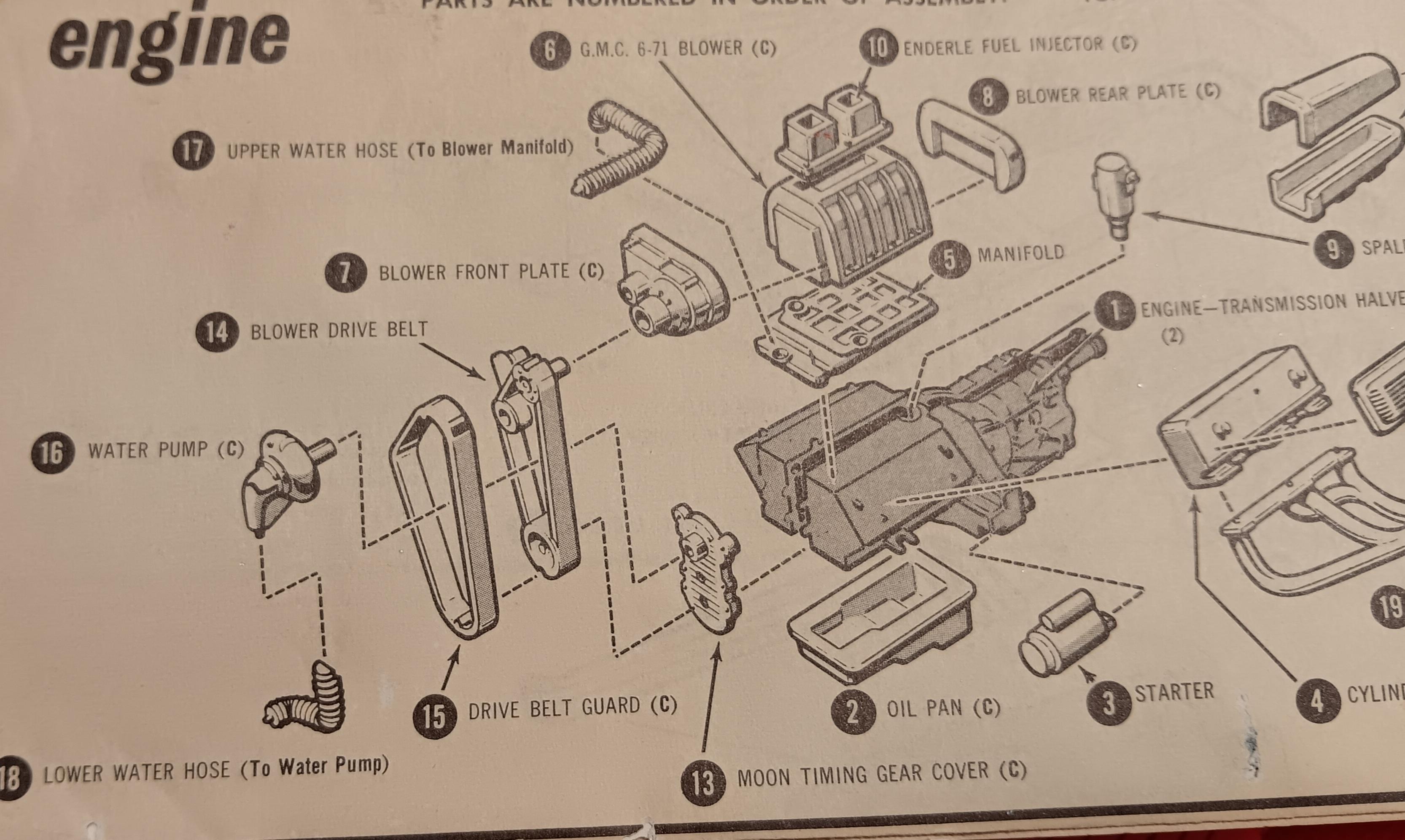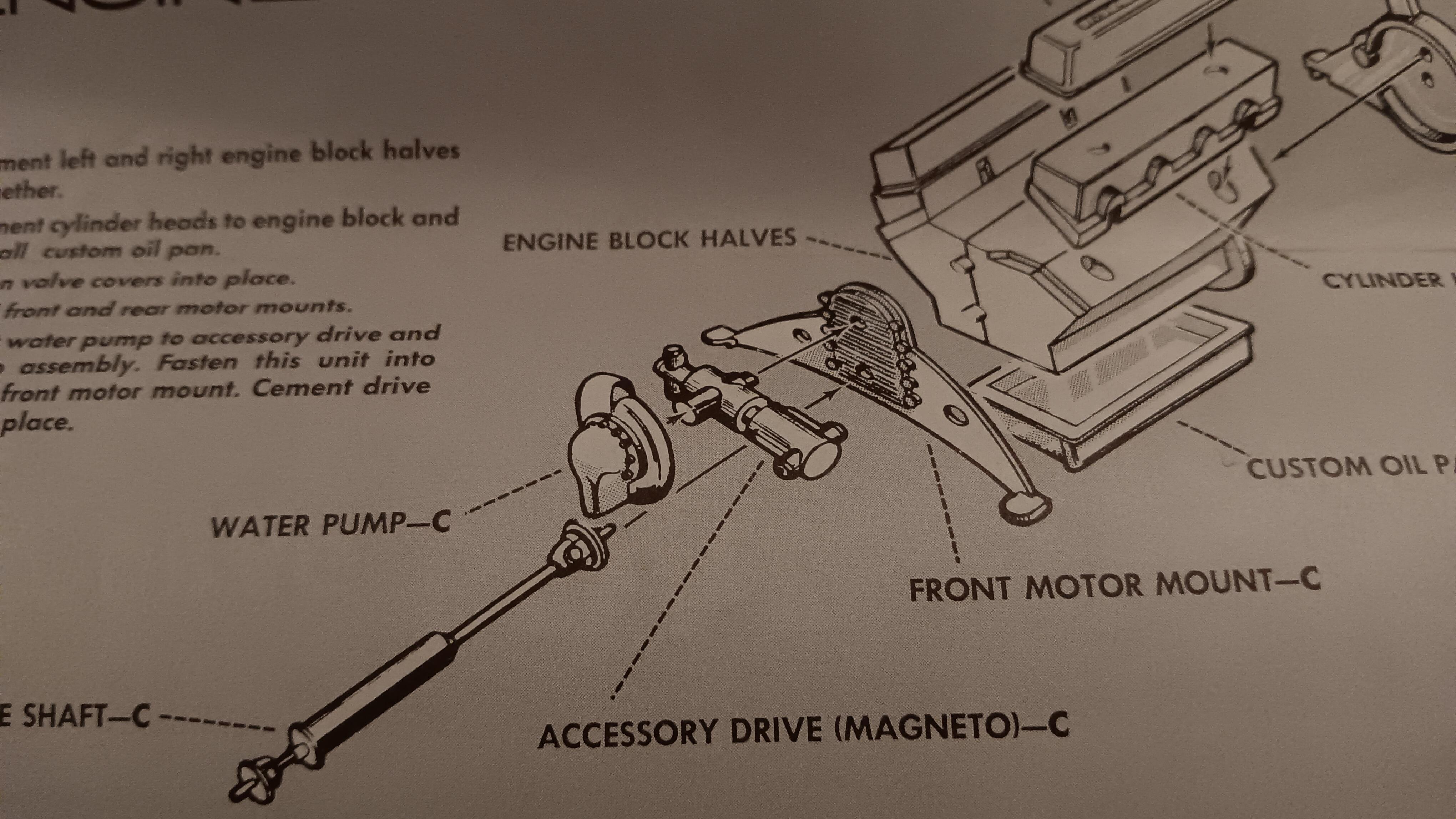
Mark
Members-
Posts
7,344 -
Joined
-
Last visited
Content Type
Profiles
Forums
Events
Gallery
Everything posted by Mark
-
Revell '66 Chevelle wagon. I believe some of the '66 El Camino kits had them too.
-
Round 2 Announcements as of 9/12/25 from Stevens Intl.
Mark replied to Justin Porter's topic in Car Kit News & Reviews
The phaeton and stock sedan kits are both based on the Victoria. Differences are confined to bodies and related parts (glass, interior bucket, windshield frame). The sedan did use the phaeton interior bucket with the rear door lines smoothed over. Phaeton kits produced after that also lack that rear door detail on the interior. The stock sedan did use a different three-piece hood. I don't know if the sedan and Victoria used the same windshield frame. -
Ford Pro Stock or Pro Street Kits?
Mark replied to PHPaul's topic in Model Building Questions and Answers
The Lincoln won't be much bigger than the Mustang. Its body is slightly shortened, cheated to fit a chassis designed for a T-Bird kit. -
What kit has a good Ford Y-Block?
Mark replied to Terry Sumner's topic in Model Building Questions and Answers
All of the Revell '57 Fords have a manual transmission, as do the AMT '56 and '57. The only one I'm aware of with an automatic is the old Revell Ranchero (and the wagon it was converted from). -
Unlike some of the other artists doing car restyling sketchpads back then, he actually measured the cars and parts being used. The pieces would work together as illustrated. Some other guys would have the components sized or proportioned incorrectly relative to one another.
-
Whoa time warp 1970s.
Mark replied to James Maynard's topic in General Automotive Talk (Trucks and Cars)
Too, the area wholesaler (they supplied toy departments in several area stores, but NOT K-Mart) operated a surplus store in the Sixties. I remember my big brother taking me there in 1966 (I was six, his turn to watch me). They had piles of AMT 1962 Styline Comet and Falcon kits, the ones with the cellophane window boxes. I got a Falcon that day, don't remember what it cost as I didn't pay for it! I do remember my brother telling me he pretty regularly bought the $1.49 AMT Trophy Series kits at a local toy store for about 90 cents apiece. That would have been in the 1960-66 time frame. -
Whoa time warp 1970s.
Mark replied to James Maynard's topic in General Automotive Talk (Trucks and Cars)
For many years, K-Mart sold AMT, MPC, Revell, and Monogram $2.00 retail price kits for $1.44. Every day. When retail inched up to $2.25 in the early Seventies, their price went to $1.64 or $1.66 (can't remember which). Woolworth's and a couple of regional store chains in the Northeast (Two Guys, and Twin Fair) used to blow out "last year's" annual kits for 99 cents after the new ones were out. On top of that, one local junk store located in a small theater used to have couple of years' old kits (returns bought from a wholesale buyer) for as little as half a buck. That ended in the early Seventies when that place caught fire. But the wholesaler had weekend sales between Thanksgiving and Christmas into the mid-Eighties where they sold return kits as well as overstock items. With those discount places and last years' annual kits, you didn't see the really popular stuff but there were still good items to be had. -
Ford Pro Stock or Pro Street Kits?
Mark replied to PHPaul's topic in Model Building Questions and Answers
For an engine, I'd look at 3D print items...lots of choices out there. Chassis...think about starting with a NASCAR truck chassis (wide enough for an older full-size car), cut away all of the floor, and swap in a tubbed rear section from the biggest Pro Street chassis out there, like the '70 Coronet or '67 Chevelle. The NASCAR truck front end uses tubular A-arms and will be beefy enough to look right under a big car. -
Not unlike some people I have worked with, and for, in the past. Who says AI isn't becoming more human?
-
The craft beads are available in hex shapes too, but you will be looking for those online as the craft stores don't stock them.
-
Painting Car Bodies with waterbased acrylics?
Mark replied to MackDrop's topic in Model Building Questions and Answers
YouTube is chock full of videos where modelers do just that. From name brand hobby acrylics (Tamiya, etc) to those cheap craft store paints, with various clearcoats. -
It's like that selling something in a lot of places. The tire kickers will show up wearing a hat and jacket from the local casino (how much did they lose to get those?), pull up in a new/leased truck they don't really need, then try to cut you in half on the price of anything including your time and labor. Then they'll cry and whine like you are asking them to sacrifice their first born.
-
A couple of things I haven't seen, or maybe have missed: -Front tire/wheel width -Wheel offset The Superbee is a fairly big car in the real world. It would seem to take a lot of tire, with maybe some unrealistic offset thrown in, to require the front suspension and steering to be radically changed in their width. If you are going for a really wide wheel/tire combo with really deep offset, that will probably require a redesign that (on an actual car) might not work particularly well but will allow the look that is being sought.
-
They got the creative upper hand in early 1967, and made one LP (Headquarters) with more of their own tunes. They then realized they weren't quite ready to take over completely, and reverted to letting others have more control. The Monkees never were a complete self-contained band, they never had a bass player in the studio. The instruments they were shown to be playing in the show weren't always the ones they actually were able to play competently. Headquarters is my favorite of their albums, precisely because it had more of their "hand" in it. The Beatles they weren't, but then again nobody else was either. Well into the Seventies you still had groups that didn't write or produce their own records yet were still making it big.
-
I'm pretty sure the original Turnpike tires were included in only one kit, the first issue '58 Impala (and probably not all of them). They were also sold in a parts pack with two equally soft Firestone slicks. Later production Impala kits probably had the same vinyl tires as other AMT kits once the Turnpike units ran out. The Impala ran in that first version box until 1967, maybe late '66, before getting a rebox. Tires were probably surplus from the Turnpike production which, sales-wise, was a dismal failure.
-
Atlantis roll out ex Revell 55 Chevy Bel Air.
Mark replied to John M.'s topic in Car Kit News & Reviews
Atlantis is apparently adding the parts pack wheels and tires they have been using in their other kits like the dragster, Fiat coupe, and T-bucket altered. I'd bet that the stock wheels and wheel covers will still be in the kit. If that is the case, you'll need to scrounge a set of Revell tires as was included in their issues of the '55 in order to get a stock version. -
The Willys installation copies the orientation of the pump as used in the Rayson-Craft boat kit. A few comments: -The boat kit does not include hose detail. -The Willys installation need not use the pump in the best way. The car needed to have a water pump and radiator to meet Gas class rules, but the car didn't run for more than two or three minutes at a time. Start, pull into staging lanes, ten-second pass, shut off, push car gets you back to the pits to cool down.
-
The name I was thinking of is JABSCO. A search of Jabsco water pumps indicates they appear to still be in business, but the style of pump used in the early Sixties as in those two model kits is not being used anymore. Looks like most boat applications use an electric pump now, as opposed to one being driven off of the boat's engine. I do recall seeing a couple of similar applications of that style pump, as well as pictures of other ones in use. The AMT Willys kit is accurate in that respect.
-
I just checked an AMT Rayson-Craft boat kit; its Ford V8 engine has the same type of pump (again, no brand name mentioned).
-
That's an aftermarket unit, often used for boat applications. The name eludes me at the moment.
-
Atlantis roll out ex Revell 55 Chevy Bel Air.
Mark replied to John M.'s topic in Car Kit News & Reviews
The '55 is probably the "easiest" of the old Revell Chevy kits. Atlantis specifies "cutting and fitting" because they apparently aren't going to include stock tires (the ones they tooled for the '57 won't fit). You'll have to radius the rear wheel openings to fit the slicks. Even Revell mentioned that alterations were needed to fit the optional 409 engine. -
DEF and dumb.
-
Well, here’s a weird issue?!
Mark replied to Joe Handley's topic in General Automotive Talk (Trucks and Cars)
I don't remember seeing that AMX kit as a Buyers' Choice item. If it had been, I'd have bought one or two. -
Well, here’s a weird issue?!
Mark replied to Joe Handley's topic in General Automotive Talk (Trucks and Cars)
That other glass looks like the one from the MPC 1/20 scale AMX kit. That kit wasn't reissued until the Round 2 era, so it's strange that one wound up in a kit manufactured before they were doing anything with it.




